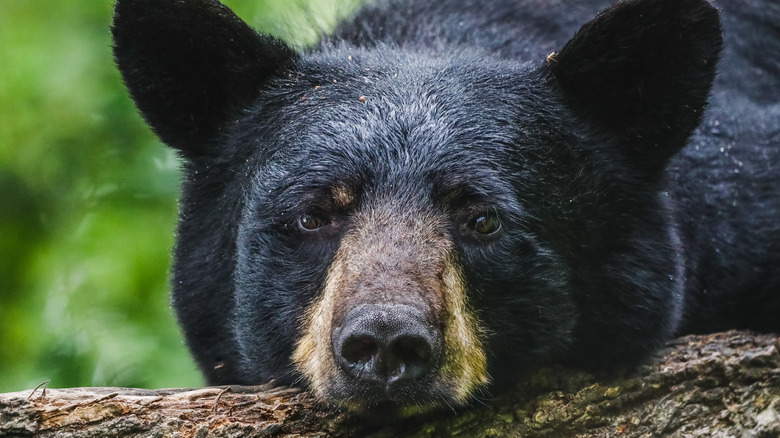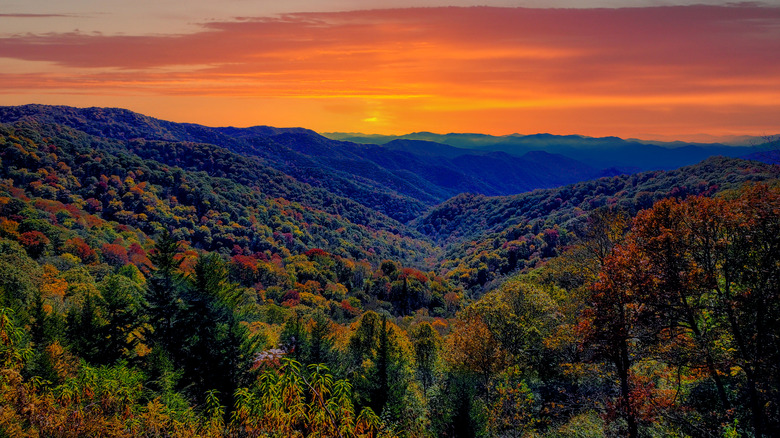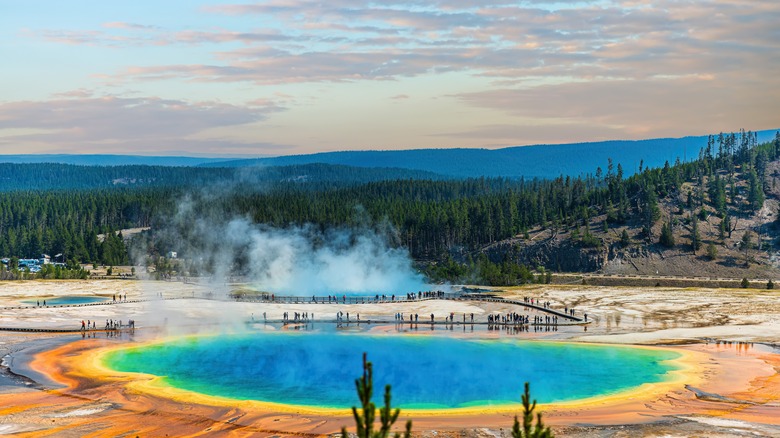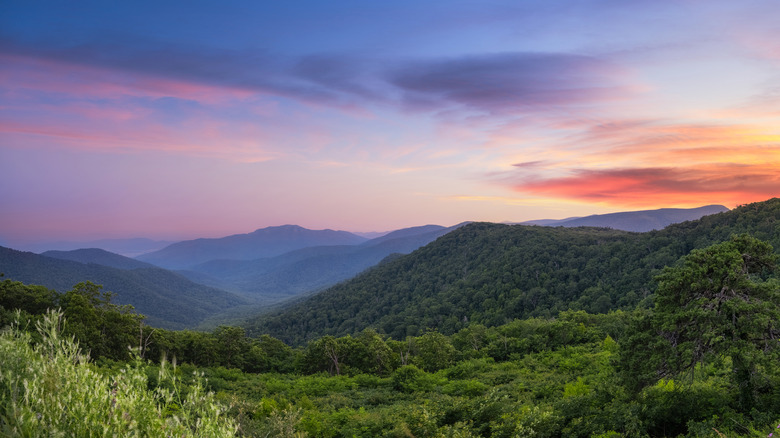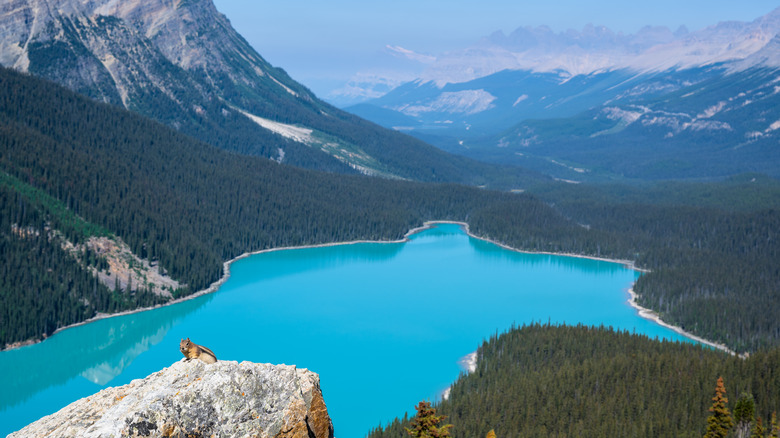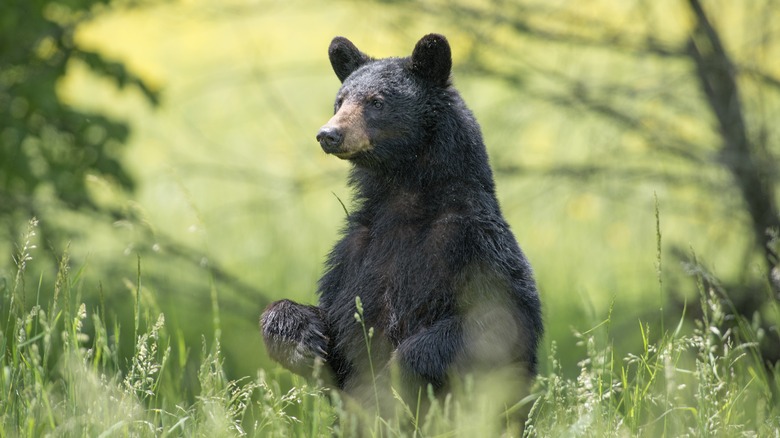See Black Bears In Their Natural Habitat At These Spots Recommended By Travelers
Black bears are one of North America's most fascinating wildlife species, renowned for their adaptability and widespread presence across the continent. These magnificent creatures, typically black but sometimes brown or even white, can weigh anywhere from 100 to 600 pounds, according to the National Park Service, with males generally being larger than females. Despite their size and sometimes intimidating appearance, black bears are primarily solitary animals that prefer to avoid human contact.
According to Discover Wildlife, there are an estimated 800,000 black bears in North America, making them the most common bear species on the continent. They inhabit a variety of environments, from the dense forests of the East Coast to the mountainous regions of the West. Black bears are omnivorous, with a diet that includes berries, nuts, insects, and occasionally small mammals or fish. Their ability to adapt to different habitats and food sources has allowed them to thrive in diverse environments.
When selecting the best places to see black bears, our focus was on regions known for high bear populations, accessibility for visitors, and the richness of the natural environment. Each location on our list not only offers excellent opportunities to see these incredible animals but also provides stunning scenery and educational resources. These destinations ensure a memorable and safe bear-watching experience while fostering an appreciation for black bears and their conservation. Whether you're a seasoned wildlife observer or a curious traveler, these locations promise unforgettable encounters with one of nature's most iconic mammals.
Great Smoky Mountains National Park, USA
Great Smoky Mountains National Park, which sits at the border between North Carolina and Tennessee, is one of the best places in the United States to observe black bears in their natural habitat. This park is home to one of the highest densities of black bears in the Eastern United States, with estimates suggesting around 1,500 bears inhabit the area, per the Great Smoky Mountains National Park. Visitors can often spot these magnificent creatures while hiking along the park's 800 miles of trails, especially in more remote regions. The Roaring Fork Motor Nature Trail and Cades Cove are particularly popular spots for bear sightings, according to Rocky Top Sports World, offering scenic routes where visitors can view bears from the safety of their vehicles. As blogger Alexys of Alexys Abroad shares, "Spring and summer Cades Cove visitors will rarely drive/bike through the loop without spotting at least one black bear or cub."
To increase your chances of seeing black bears, visit during the early morning or late evening when bears are most active. While observing these animals, it's crucial to maintain a safe distance of at least 50 yards and never feed the bears, as human interaction can be harmful to both bears and people. The park offers educational programs and guided tours, providing valuable information on black bear behavior and conservation.
Yellowstone National Park, USA
Yellowstone National Park, spanning across Wyoming, Montana, and Idaho, is renowned for its diverse wildlife, including a healthy population of black bears. While the park is more famous for its grizzly bears, black bears are frequently sighted, especially in the northern parts of the park, such as Lamar Valley and Tower-Roosevelt, according to Yellowstone Guidelines. These areas offer vast, rugged landscapes where black bears forage for food, making them prime spots for sightings. Spring and early summer are the best times to see black bears as they emerge from hibernation and search for food. "For black bears, the trick is to drive back and forth around the Roosevelt area or just south, and keep looking into the forest," says Quirky Travel Guy blogger Scott Shetler.
The park's rangers often provide updates on recent sightings, and guided tours can offer safe and informative bear-watching experiences. In addition to bear sightings, visitors can enjoy Yellowstone's geothermal features, such as geysers and hot springs, making it a multifaceted destination for nature enthusiasts. The park advises visitors to be "bear-aware" at all times, as encounters can happen unexpectedly, per Yellowstone Forever. Rangers recommend carrying bear spray and making noise while hiking to avoid surprising a bear.
Shenandoah National Park, USA
Shenandoah National Park in Virginia is another excellent location for black bear sightings. The park, part of the Blue Ridge Mountains, is home to an estimated 200 to 1,000 black bears, according to Visit Skyline Drive. Skyline Drive, a 105-mile scenic route through the park, offers numerous opportunities to spot bears, especially in the early morning or late afternoon when they are most active. Kars Travels, a travel blogger, can attest to this: "We were so lucky to see a black bear on the end of the Skyline Drive," noting that they spotted the animal wandering through the bushes. Hiking trails like the Appalachian Trail and the Old Rag Mountain trail are also prime bear-spotting locations. While bears can be seen year-round, late spring and summer are the best times for sightings as bears are more active and visible.
In addition to black bears, Shenandoah is home to a variety of wildlife, including deer, wild turkeys, and a plethora of bird species, making it a biodiversity hotspot. The park's diverse flora and stunning vistas make it a favorite among nature lovers and wildlife photographers. Each visit promises a new adventure, with the chance to witness the intricate balance of the park's ecosystem up close.
Banff National Park, Canada
Banff National Park in Alberta, Canada, is a stunning location within the Canadian Rockies and a great place to see black bears. The park's diverse habitats, ranging from dense forests to alpine meadows, provide ideal conditions for black bears to thrive. According to Nature TTL, the Icefields Parkway and Bow Valley Parkway are renowned for wildlife sightings, including black bears, particularly in the spring and early summer when bears come down to the valleys to feed. The park offers various guided wildlife tours that increase your chances of a sighting while ensuring safety.
Observing black bears in Banff's breathtaking landscape, with its towering mountains and pristine lakes, is an unforgettable experience. Besides bear-watching, visitors can enjoy hiking, canoeing, and exploring the park's extensive trail network. Remember to follow safety protocols, such as storing food properly and maintaining a safe distance from wildlife, to protect both visitors and bears. "It's essential to remember that a bear is not hiding in the woods waiting to pounce on unsuspecting hikers," notes Cameron from The Banff Blog, adding, "Hiking in Bear Country is about mitigation and preparation." Banff also provides educational resources and visitor centers where one can learn about bear behavior and conservation efforts, making it a well-rounded destination for wildlife enthusiasts.
Methodology for selecting the best places to see black bears
Choosing the best places to see black bears in their natural habitat involves a comprehensive approach that balances wildlife density, visitor safety, and the quality of the viewing experience. First, we identified regions known for significant black bear populations through extensive research of wildlife studies and national park reports. This provided a foundation of locations where black bears are prevalent and can be observed reliably. Next, we evaluated the accessibility and infrastructure of these locations. Parks and reserves with well-maintained trails, scenic drives, and guided tours were prioritized as they enhance the overall viewing experience while ensuring safety.
We also considered the seasonality and timing of black bear activity and ensured a diverse geographical representation to cater to different preferences and logistical considerations. Locations where bears are most visible during certain times of the year were highlighted, focusing on spring and early summer when bears are active after hibernation.
Lastly, we emphasized the importance of preserving natural habitats and respecting wildlife. Conservation efforts and sustainable tourism practices were integral in our choices, ensuring that visitors can enjoy observing black bears responsibly while contributing to their protection. This methodology ensures that the selected locations offer the best opportunities for an enriching wildlife experience that respects the natural environment and promotes conservation awareness.
